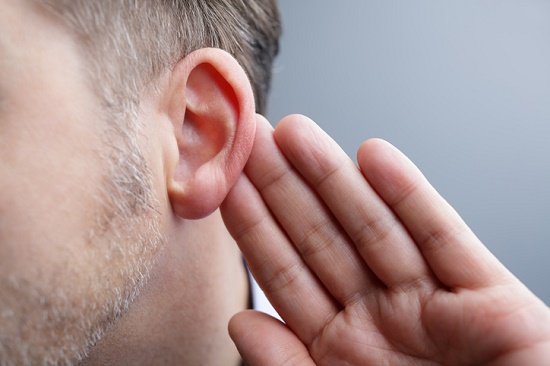
Your chances of acquiring hearing loss at some time in your life are regrettably very high, even more so as you age. In the US, 48 million people report some extent of hearing loss, including nearly two-thirds of adults age 70 and older.
That’s why it’s vital to understand hearing loss, so that you can identify the symptoms and take preventive actions to reduce injury to your hearing. In this article, we’re going to concentrate on the most common form of hearing loss: sensorineural hearing loss.
The three forms of hearing loss
In general, there are three types of hearing loss:
- Conductive hearing loss
- Sensorineural hearing loss
- Mixed hearing loss (a combination of sensorineural and conductive)
Conductive hearing loss is less common and is caused by some form of blockage in the outer or middle ear. Typical causes of conductive hearing loss include impacted earwax, ear infections, benign tumors, perforated eardrums, and hereditary malformations of the ear.
This article will focus on sensorineural hearing loss as it is by far the most common.
Sensorineural hearing loss
This form of hearing loss is the most prevalent and accounts for about 90 percent of all reported hearing loss. It is triggered by damage to the hair cells (nerves of hearing) of the inner ear or to the nerves connecting the inner ear to the brain.
With sensorineural hearing loss, sound waves enter through the external ear, hit the eardrum, and reach the inner ear (the cochlea and hair cells) as normal. However, due to destruction to the hair cells (the tiny nerve cells of hearing), the sound signal that is sent to the brain for processing is weakened.
This weakened signal is perceived as muffled or faint and normally affects speech more than other types of lower-pitched sounds. Also, as opposed to conductive hearing loss, sensorineural hearing loss tends to be permanent and can’t be corrected with medication or surgery.
Causes and symptoms
Sensorineural hearing loss has various possible causes, including:
- Genetic disorders
- Family history of hearing loss
- Meniere’s Disease or other disorders
- Head injuries
- Benign tumors
- Exposure to loud noise
- Aging (presbycusis)
The final two, direct exposure to loud noise and aging, represent the most widespread causes of sensorineural hearing loss, which is actually great news because it suggests that most cases of hearing loss can be avoided (you can’t avoid aging, of course, but you can limit the cumulative exposure to sound over your lifetime).
To fully understand the signs and symptoms of sensorineural hearing loss, you should bear in mind that damage to the nerve cells of hearing usually comes about very slowly. Therefore, the symptoms advance so gradually that it can be just about impossible to detect.
A slight amount of hearing loss every year will not be very perceptible to you, but after several years it will be very apparent to your family and friends. So even though you might believe that everyone is mumbling, it might be that your hearing loss is catching up to you.
Here are some of the symptoms to watch for:
- Trouble understanding speech
- Trouble following conversions, especially with more than one person
- Turning up the television and radio volume to elevated levels
- Continually asking other people to repeat themselves
- Perceiving muffled sounds or ringing in the ears (tinnitus)
- Feeling excessively tired at the end of the day
If you notice any of these symptoms, or have had people inform you that you may have hearing loss, it’s a good idea to book a hearing test. Hearing tests are fast and painless, and the sooner you treat your hearing loss the more hearing you’ll be able to preserve.
Prevention and treatment
Sensorineural hearing loss is mostly preventable, which is good news because it is by far the most common type of hearing loss. Millions of instances of hearing loss in the US could be eliminated by implementing some simple precautionary measures.
Any sound higher than 80 decibels (the volume of city traffic inside your car) can potentially affect your hearing with chronic exposure.
As the decibel level increases, the amount of time of safe exposure decreases. That means at 100 decibels (the volume of a rock concert), any exposure over 15 minutes could harm your hearing.
Here are a few tips on how you can reduce the risk of hearing loss:
- Use the 60/60 rule – when listening to a mp3 player with headphones, listen for no more than 60 minutes at no more than 60 percent of the max volume. Also think about purchasing noise-canceling headphones, as these will require lower volumes.
- Shield your ears at concerts – rock concerts can range from 100-120 decibels, significantly above the ceiling of safe volume (you could harm your hearing within 15 minutes). Minimize the volume with the aid of foam earplugs or with musician’s plugs that preserve the quality of the music.
- Protect your ears on the job – if you work in a high-volume occupation, talk to your employer about its hearing protection program.
- Safeguard your hearing at home – a variety of household and recreational activities generate high-decibel sounds, including power saws, motorcycles, and firework displays. Always use ear protection during extended exposure.
If you already have hearing loss, all is not lost. Hearing aids, while not able to completely restore your hearing, can significantly improve your life. Hearing aids can improve your conversations and relationships and can prevent any additional consequences of hearing loss.
If you think you may have sensorineural hearing loss, book your quick and easy hearing test today!